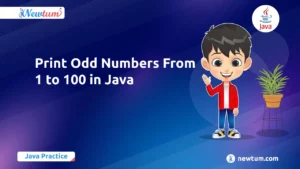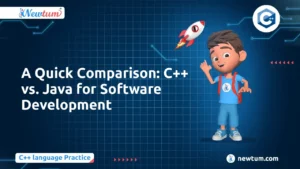Are you curious about diving into the world of programming with one of the most popular languages, C++? You’re in the right place! Starting with the ‘C++ Basics- Hello World Program’, this blog will guide you step-by-step as you take your first stroll into coding. If you’re wondering where to begin or feeling overwhelmed with all the information out there, fear not! We’ll break it down simply, focusing on making your learning experience enjoyable and straightforward. Stick around, and by the end, you’ll have written your very own “Hello World” program in C++, a classic first step for every programmer out there.
What is the “Hello World” Program?
The “Hello World” program is the simplest and most iconic program for beginners starting with C++. It involves displaying the text “Hello, World!” on the screen. This program serves as a foundational step to familiarize learners with basic C++ syntax, structure, and workflow. By writing and executing it, beginners understand the essentials like including libraries (#include <iostream>), defining the main function (int main()), and using the cout statement for output. Its simplicity ensures a quick and successful first experience with coding, building confidence and reducing intimidation. Additionally, it introduces the concept of compiling and running a program, making it an essential milestone for grasping how C++ works at its core.
Getting Started with the C++ Basics- Hello World Program Code
#include <iostream>
using namespace std;
int main() {
cout << "Hello, World!" << endl;
return 0;
}
Explanation of the Code
#include <iostream>:
This line includes the Input/Output Stream library, which is essential for usingcoutto display output on the screen.using namespace std;:
This allows the program to use standard library functions likecoutandendlwithout prefixing them withstd::. It’s optional but simplifies the code.int main():
This defines the main function, the entry point of the program where execution begins.cout << "Hello, World!" << endl;:
Thecoutobject outputs text to the console. The<<operator inserts the string"Hello, World!"into the output stream, andendlmoves the cursor to the next line.return 0;:
This signals the program executed successfully. Returning 0 is a convention in C++ to indicate no errors.
Output
Hello, World!Steps to Write and Execute “Hello World”
Tools Needed:
- A C++ compiler (e.g., GCC, Clang).
- A C++ IDE (e.g., Code::Blocks, Visual Studio, or Eclipse) or a text editor (e.g., Notepad++).
Step-by-Step Instructions:
- Run the Program: Execute the compiled file through the IDE or by running
./helloworldin the terminal. - Install Tools: Download and install an IDE or compiler if not already available.
- Create a New Project/File: Open the IDE, create a new C++ project, and name it appropriately. Alternatively, create a
.cppfile using a text editor. - Write the Code: Copy and paste the “Hello World” program into the editor.
- Save the File: Save the program with a
.cppextension (e.g.,helloworld.cpp). - Compile the Program: Use the “Build” or “Compile” button in the IDE. For a text editor, compile using the terminal command:
g++ helloworld.cpp -o helloworld.
Real-Life Uses of the ‘C++ Basics- Hello World Program’
Although the “Hello World” program itself is basic, its principles serve as a stepping stone for real-world applications in companies like Microsoft, Adobe, and NVIDIA. These companies use C++ for developing complex software, and the foundational knowledge gained from the “Hello World” program helps developers build their skills for such advanced tasks.
- Microsoft: Microsoft utilizes C++ to develop its Windows operating system, Office applications, and Edge browser. The understanding of program structure and syntax, introduced through the “Hello World” program, forms the basis for creating robust and efficient software like Windows, where precision and optimization are critical.
- Adobe: Adobe relies on C++ to create graphic-intensive applications like Photoshop and Premiere Pro. The basic principles of input and output operations learned from the “Hello World” program expand into managing complex user interfaces and high-performance rendering systems.
- NVIDIA: NVIDIA uses C++ extensively for developing GPU drivers and CUDA, a parallel computing platform. Concepts introduced in “Hello World” lay the groundwork for understanding hardware-software interactions and optimizing performance for gaming and AI applications.
The “Hello World” program, though simple, is the first step in understanding the language that powers some of the most impactful software solutions worldwide.
Test Your Knowledge: ‘C++ Basics- Hello World Program’ Quiz!
- What is the primary function used to output text in a C++ program?
- a) cout
- b) printf
- c) console.log
- Which line in a C++ program signifies the start of the main function?
- a) #include
- b) int main() {
- c) return 0;
- Which line must be included for input-output operations in C++?
- a) #include
- b) using namespace std;
- c) #include
- What is the correct syntax to print “Hello World” on the console?
- a) cout << “Hello World”;
- b) echo “Hello World”;
- c) print(“Hello World”);
- What does ‘return 0;’ signify in a C++ program?
- a) The program executed successfully
- b) There is an error in the program
- c) The program will output the number 0
Try out our a reliable C++ compiler today and start your journey into the world of programming with ease!
Common Errors and How to Avoid Them
Typical Mistakes:
- Missing Semicolons: Forgetting a semicolon (
;) at the end of statements. - Incorrect Syntax: Typos in keywords like
intorreturn. - Case Sensitivity: Using incorrect case for keywords (
Maininstead ofmain).
Troubleshooting Tips:
- Read Error Messages: Compiler errors often point to the exact issue.
- Check Syntax: Compare your code against the sample program.
- IDE Features: Use IDEs with error detection to highlight issues.
- Debugging: Simplify the program by isolating problematic sections.
Conclusion
Mastering the “Hello World” program builds confidence and lays the groundwork for learning C++. It introduces fundamental concepts like syntax and program execution. Practice regularly to solidify your skills and explore more C++ basics to advance in programming.
In conclusion, learning the ‘C++ Basics- Hello World Program’ is your first step into the fascinating world of programming. It’s simple, yet profound. Ready to continue this thrilling journey? Visit Newtum for more tutorials. Let’s code and explore further together!
Edited and Compiled by
This blog was compiled and edited by Rasika Deshpande, who has over 4 years of experience in content creation. She’s passionate about helping beginners understand technical topics in a more interactive way.



